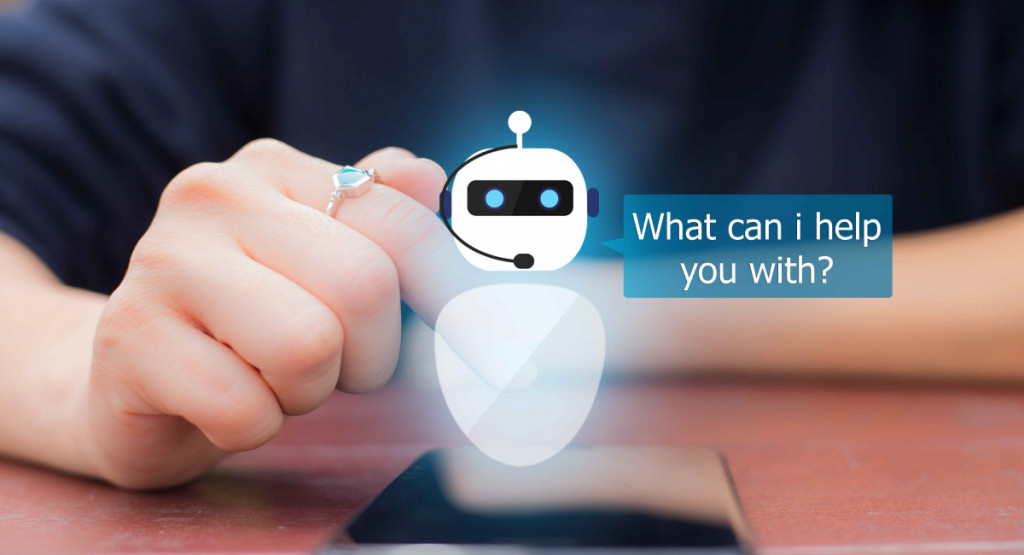A Digital Approach to Sustainability
Chris Williams of software firm ISB Global makes the case for digitalisation as the means for a less wasteful, more resource-efficient global economic model. A circular economy involves building a ‘zero waste’ approach into everything we do. From reducing the volume of raw materials needed to make products, to ensuring there is a sustainable approach for disposing of products when they reach their end of life – these steps all reduce waste, which in turn reduces greenhouse gas emissions and conserves the environment.
The road to building a sustainable circular economy is now a digital issue. For it to become a reality, business, organisations, and governments must use digital to put in place their own low-waste circular approaches.
Digitalisation can not only enhance operational performance by providing clear visibility across all business functions but also allow better access to forecasting data. A low code approach can play a key role in this process.
Low-code software as a catalyst for transformation
With the emergence of low code software over the past 20 years, organisations have been able to achieve their digital transformation, faster and with greater accuracy. The benefits are clear. Low code-based software applications reduce costs making collaboration easier and speeding up development and rollout, as well as supporting new features and providing continual updates, which can be designed, programmed, tested and released in a fraction of the time of traditional hand coding. Its ability to bring platforms and applications to market more quickly also allows organisations to respond to new developments, add new features and functionality, and deliver a better user interface and user experience.
ISB Global has used our partner OutSystem’s low code platform to harness these advantages and meet the particular needs of waste management operators and other companies who use our Waste and Recycling One platform to build an adept sustainable operating model. Platforms like this give organisations the all-important insight they need to become more agile and respond to new developments and challenges as they arise.
Digitalisation can make the circular economy a reality
There are three principal ways in which digitalisation can reduce environmental impact and facilitate a more circular low-waste economy:
- Tracking Materials: The extraction of raw materials used to make products – whether by drilling, mining, quarrying or farming – damages the environment, generates harmful emissions, and depletes the planet’s natural resources. To move to a circular economy, manufacturers and producers must identify and source alternative materials that are less environmentally harmful: or reuse existing materials. Digitalisation enables businesses to track materials through their lifecycle: and also, accurately measure the benefits of using alternative materials or reusing existing ones.
- Supply Chain Resilience: Companies are already having to deal with more incidents of supply disruption and shortages caused by extreme weather, conflict or other unexpected events. These occurrences are likely to increase in future. The onus now is on businesses to secure resources and maintain supply chains or establish alternative ones. AI-assisted forecasting that accurately predicts supply and demand needs, and which also identifies potential weaknesses in operations before they become a problem, gives organisations the means to boost their resilience by pre-empting possible supply chain disruptions and shortages.
- Circular Economy Design: Digital tools will help businesses to design products and services that support a circular economy – everything from assessing the suitability of new materials: re-designing products where necessary, managing assembly and disassembly: and separating materials at the end of a product’s life for reuse elsewhere.
The Sustainability Revolution
Digitalisation has the transformational potential to adapt how businesses work and establishing a less resource-intensive, more circular low-waste economy. This is essential for conserving our environment at a local, national and international level. The implementation of different digital technologies has the potential to make a low-waste circular economy a reality by enhancing the workflows and operational efficiency. Coupled with old-fashioned human inventiveness and endeavour, the latest digital technologies can offer significant opportunities for progress.
Rather than seeing digitalisation as a necessary operational cost, companies should instead regard it as an investment that will strengthen their business, boost performance, and inspire new ideas and opportunities – all while contributing to a healthier, more sustainable way of life.
Sustainable Digitalization: Embracing the Double Transition
As technology becomes a partner in all aspects of our lives and shapes our societies, ensuring this change happens sustainably becomes even more important. We explore what this sustainable digitization is, the keys to achieving it, and why you should introduce it into your processes.
According to Digital SME, Sustainable digitalization is about strengthening the digital sovereignty of companies and organizations by enabling the double transition of our economy. Also known as sustainable digital transformation, the concept refers to the process of digitizing the economy in a lasting, green, and organic way. It aims to support and facilitate the double transition to a green and digital economy by harnessing the power of innovative companies and their business ecosystems.
In order to achieve this, it is based on three main pillars:
- Environmental Responsibility: Digitalization and care for the environment must always go hand in hand to create future consumers and professionals who share these values, as well as to preserve the environment and the well-being of future generations.
- Social Inclusion: The digital divide still limits access to technology and information for many people around the world. To address this, we need to promote digital inclusion and ensure equal access to technology and information, including investing in infrastructure, improving internet access and digital skills, and creating accessible content in different languages and formats.
- Economic Sustainability: Digital technologies can help drive economic growth and create new jobs while reducing environmental impact and promoting social responsibility. This includes developing innovative technologies and business models that are both economically viable and environmentally sustainable.
The Challenges to Sustainable Digitalization
However, the main challenges facing digital sustainability are as follows.
- Energy Consumption and Emissions: A major focus of technologies is the energy and natural resources they consume, which contribute to greenhouse gas emissions. To address this challenge, it is necessary to promote efficiency at all stages of the digital technology lifecycle, from production to disposal, including the use of more efficient and sustainable technologies, materials, and infrastructures. One example to address this is adopting renewable energy sources and transitioning to a low-carbon economy.
- E-waste Management: The rapid obsolescence and short life cycle of some technological devices generate tons of e-waste. Many contain toxic materials and are not disposed of correctly. To address this, the life cycle of electronic devices must be extended by using more sustainable materials and promoting reuse. Thus, companies need to raise awareness of responsible disposal and the adoption of sustainable practices in the industry.
- Privacy and Security: The digital age also has a significant impact on the privacy and security of individuals. Therefore, an ethical and responsible approach to digital technology should be promoted, including the adoption of ethical standards and practices in the development and use of technology, as well as privacy in the handling of data.
Enabling Sustainable Digital Modernization
To achieve fair, sustainable digitalization and overcome the challenges mentioned above, companies need to take steps to enable sustainable digital modernization.
- Invest in Green Technologies: Companies should prioritize the adoption of energy-efficient technologies, renewable energy sources, and sustainable materials in their operations. This includes investing in research and development to create new technologies that are both environmentally friendly and economically viable.
- Promote Circular Economy Practices: Companies should implement circular economy principles throughout their operations, from product design and manufacturing to distribution and end-of-life management. This includes using recycled materials, reducing waste, and extending the life cycle of products.
- Foster Collaboration and Partnerships: Companies should collaborate with other organizations, governments, and research institutions to develop and implement sustainable digital solutions. This includes sharing best practices, developing common standards, and working together to create a more sustainable digital ecosystem.
The Future of Sustainable Digitalization
Sustainability and digitalization must go hand in hand, as they are fundamental pillars for our planet, society, and economy. Thanks to digital technologies, global CO2 emissions could be reduced by 20% over the next few years, but they also present sustainability challenges. Sustainable digitalization is a powerful tool to combat climate change, without sacrificing business efficiency. By applying such solutions, we can achieve important goals such as:
- Reduced Environmental Impact: Sustainable digitalization helps companies reduce their environmental footprint by optimizing energy consumption, minimizing waste, and promoting sustainable practices.
- Enhanced Resource Efficiency: By using data analytics and AI, companies can improve resource allocation, optimize supply chains, and reduce material waste, leading to greater resource efficiency.
- Improved Decision-Making: Sustainable digitalization provides companies with access to real-time data and insights, enabling them to make more informed decisions that prioritize sustainability.
- Increased Transparency and Accountability: Sustainable digitalization promotes transparency and accountability by providing stakeholders with access to relevant data on environmental and social performance.
Therefore, it is critical to continue to drive technological innovation and foster collaboration across all sectors to successfully transition to a sustainable and resilient future.
Plain Concepts: A Leader in Sustainable Digitalization
At Plain Concepts we know that sustainability is a fundamental pillar for society and for building strong businesses. We strive to do things differently and constantly improve, both for our customers and employees, as well as for the surrounding community. Our goal is to create value through corporate responsibility, so we innovate to increase the impact of our actions and explore new ways to use our technology to overcome new global challenges.
We will help you improve the productivity of your business while empowering you to achieve more efficient and sustainable processes. Join us in a more sustainable and efficient model! Microsoft has awarded its best partners and Plain Concepts was the winner in the category ‘Azure Migration’ and finalist in ‘Data & Analytics’. The final shortlist for the 16th IT Europa Channel Awards has been announced and Plain Concepts has been shortlisted in two of the main categories of the awards.
The Role of ERP in Achieving Sustainable Digitalization
Both nationally and internationally, there is increasing pressure on companies in all sectors to achieve regulatory sustainability targets by adapting and modifying their technological infrastructure accordingly. In this context, numerous laws are intended to contribute to the successful implementation of the Green Deal. The European Union in particular has set itself ambitious goals with its voluntary commitment to become the first climate-neutral continent. The aim is to achieve zero net greenhouse gas emissions by 2050. As a milestone target for 2030, it has already been set to emit at least 55 percent less net greenhouse gases than in 1990. Companies are therefore not only obliged to disclose their carbon footprint, but also to be transparent about the specific measures they are taking to reduce their emissions. The EU taxonomy defines the framework for sustainability and contains the Corporate Sustainability Reporting Directive (CSRD), according to which companies with more than 250 employees, a turnover of 40 million euros or a balance sheet total of more than 20 million euros must report from this year onwards. This will affect large parts of the economy, as clients of this size will demand extensive information and evidence from suppliers that are still operating below the assessment thresholds. In a recent proALPHA study, 38% of the IT and tech companies surveyed – which are not yet directly affected by the CSRD – stated that the ESG and CSRD regulations would entail a considerable additional reporting burden for them. It is only a matter of time before SMEs themselves are also obliged to provide comprehensive sustainability reporting. It is therefore high time for SMEs to look into the technological feasibility of implementing this extensive list of tasks in their own company.
However, the closer company managers look at their IT architecture, the more complex this project becomes. Not least because, although all relevant areas of the company and the processes implemented in them are interrelated, in many cases there is a lack of best practices and reliable figures. So where is the best place to start? The linchpin of successful sustainability management is a powerful Enterprise Resource Planning (ERP) system. In this context, Artificial Intelligence (AI) becomes an “opportunity driver for environmental and climate protection”. Green AI is therefore becoming increasingly important, particularly for SMEs.
Leveraging Green AI for Sustainability Transformation
Medium-sized companies can derive the greatest possible benefit from a combination of AI, business intelligence and a modern ERP system. Because as a stand-alone solution, AI can basically do everything and nothing. However, the path from the implementation of algorithm-based analysis software to Green AI is far too long and laborious to be a realistic alternative. Only in the context of a specific application does AI support companies in their sustainability transformation. Employees are empowered to access predictive analyses and automated processes without entry barriers. For example, when they receive placement recommendations based on historical order fulfillment data, the technology behind them remains a means to an end. As an intelligent layer between other powerful software applications, AI unleashes its potential in areas such as inventory management and field service and accelerates innovation. The ERP system contains all the information about the company and its customers and business partners in the form of huge data records. AI identifies and consolidates this flood of information, prepares it clearly and thereby improves cross-departmental productivity.
The Power of ERP in Driving Sustainable Business
The ability to adapt quickly to market developments and changing conditions is one of the secrets of success for SMEs. However, this ability stands and falls with the business software in use, as ERP systems are the backbone of the digital transformation of companies and at the same time enable the sustainability transformation using Green AI in the first place. In order to fully meet their reporting obligations through intelligent emissions control and consistent energy management, companies need a powerful ERP system with an integrated CO2 balancing solution. This must be able to present the energy flows and their interactions transparently, taking into account various emission categories (scopes). ERP systems with integrated CO2 management software (ENIT was integrated into proALPHA ERP for this purpose) serve as a single source of truth for all analyses and measures relating to emissions control and energy management. They enable continuous CO2 tracking, the development and implementation of reduction measures and the monitoring of emissions trends. As part of holistic sustainability management, the company-wide energy requirements and CO2 footprint are recorded, controlled and documented. This enables companies to replace highly CO2-emitting primary products with alternatives with a better carbon footprint or reduce resource consumption through consolidated procurement processes.


















